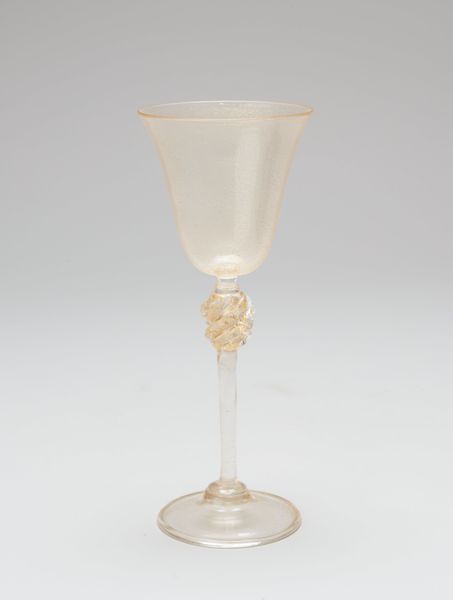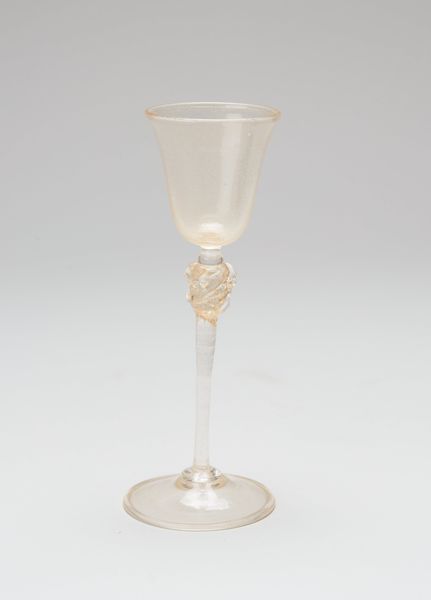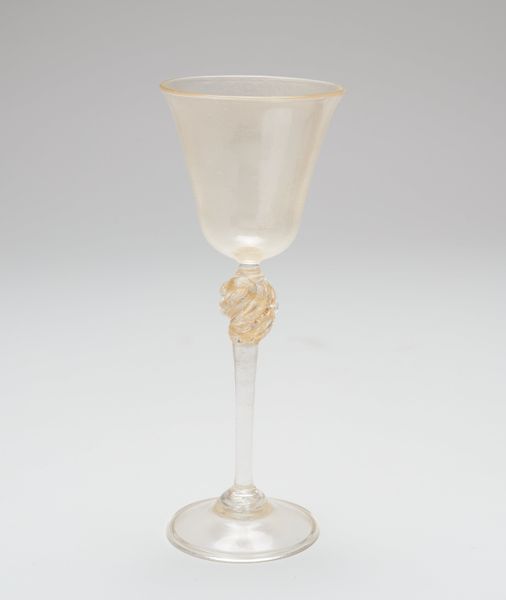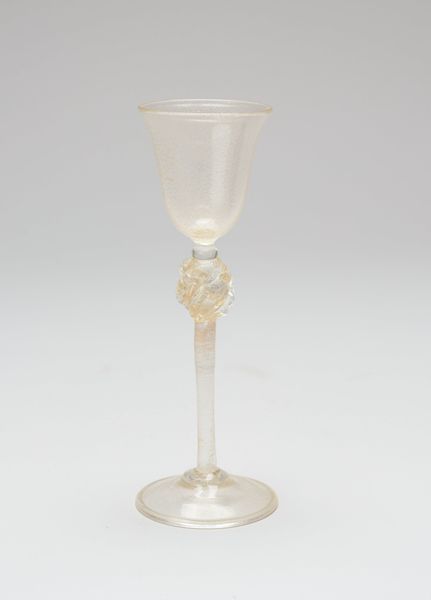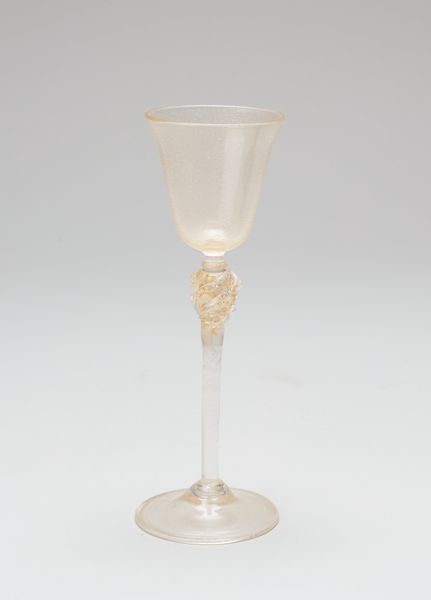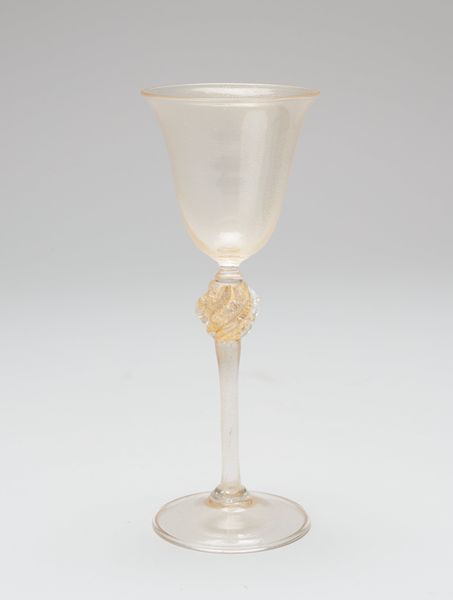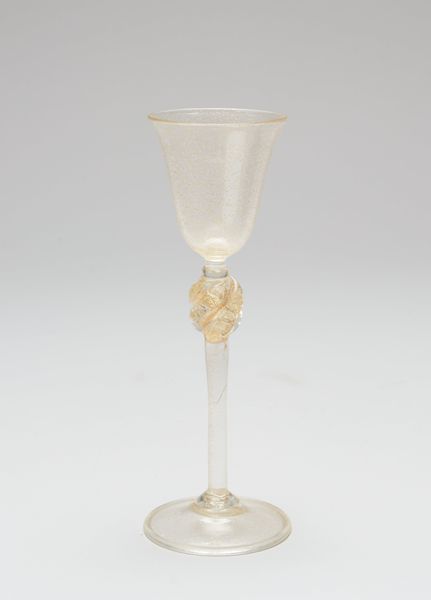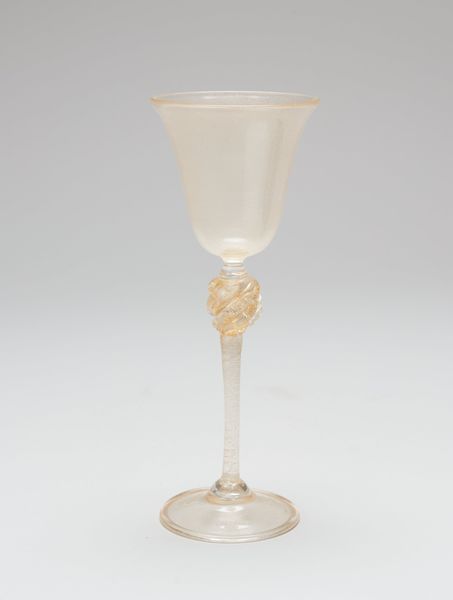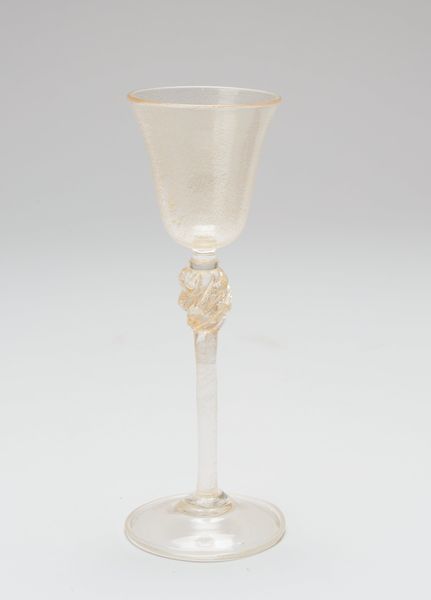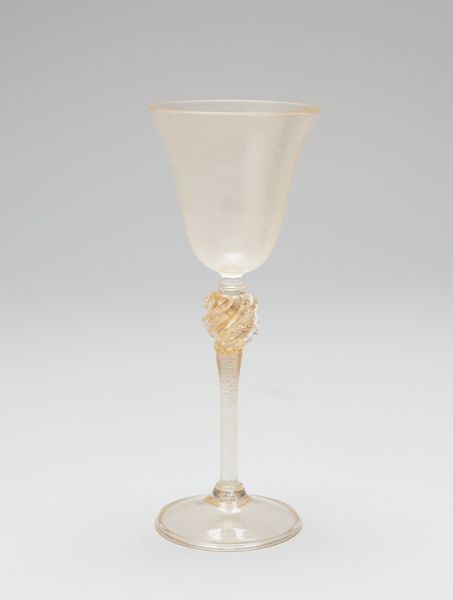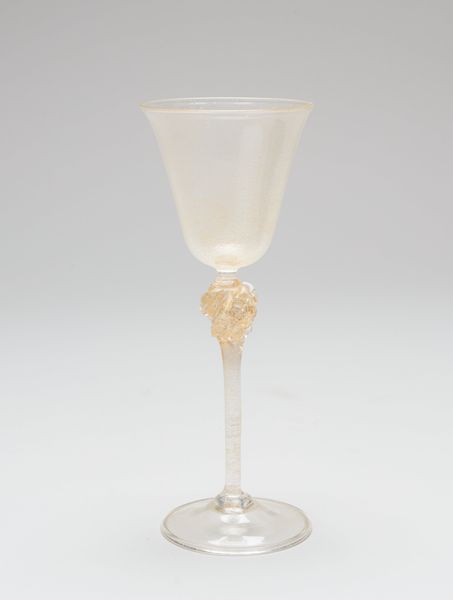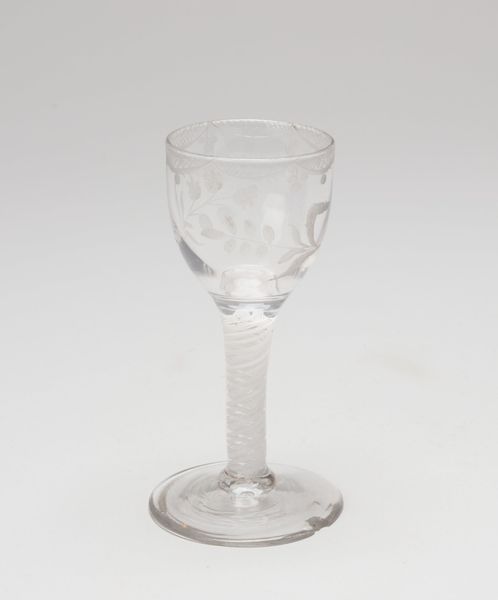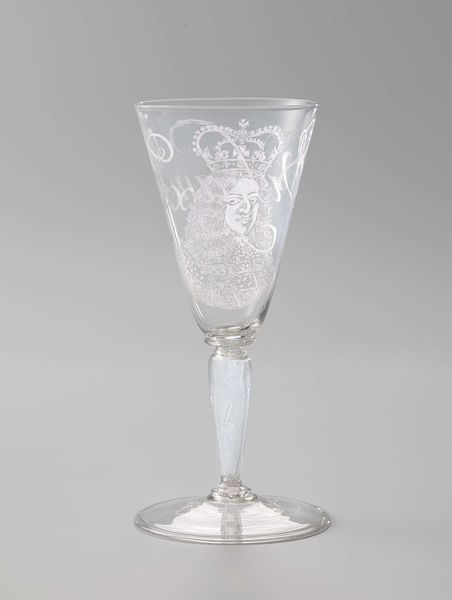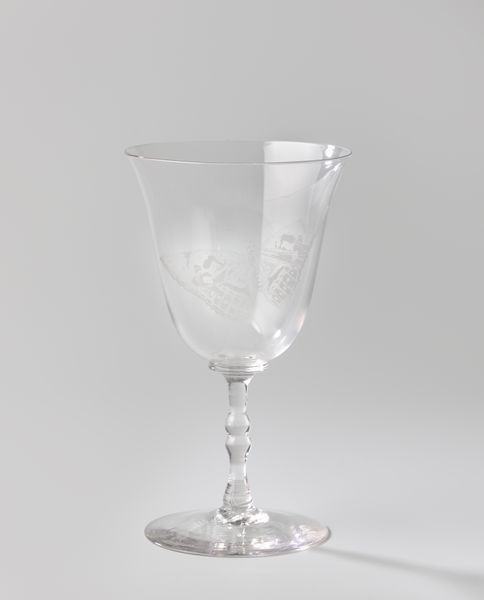
glass
#
glass
#
ceramic
#
decorative-art
Dimensions: 8 1/4 x 3 1/4 in. (20.96 x 8.26 cm)
Copyright: Public Domain
Editor: Here we have a wine glass, likely crafted around 1920. It's a delicate piece of glasswork with an intriguing, almost fragile aesthetic. The stem has these delicate gilded details that seem almost floral. What can you tell me about this work? Curator: This glass, situated within the context of decorative arts of the early 20th century, speaks to a yearning for beauty amidst societal shifts. Consider its creation in the wake of World War I, and before the Great Depression, where luxury and crafted items can signal both a desire for hope but also extreme economic inequality. Who was drinking from this? What did it mean to be drinking from this sort of elaborate glassware during Prohibition? Editor: That's fascinating; I hadn't considered the economic factors. The floral design also speaks to earlier traditions in glass making, correct? Curator: Absolutely. We need to consider the gendered nature of decorative arts, too. Objects like these, considered ‘domestic,’ were often relegated to a lesser status than ‘high art’, even when, or perhaps because, women artisans had their hands involved in this artform. Can we rethink what "decorative art" means when we account for the labor involved? Editor: So, by examining its materials, period, and original context, we can reveal hidden narratives about craft, gender, and class? Curator: Precisely! Examining something as simple as a wine glass helps us unpack complex intersections of labor, gender and artistic value. This allows us to engage with the broader historical conversation surrounding art and society. Editor: I hadn't thought about it that way; thank you for that broader context.
Comments
No comments
Be the first to comment and join the conversation on the ultimate creative platform.
